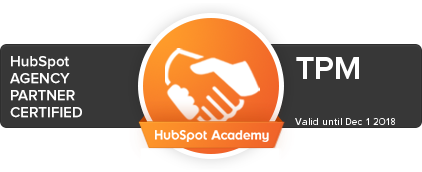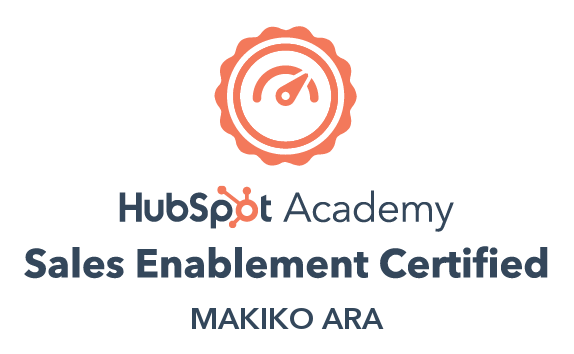Developments in artificial intelligence are transforming the business world, whether we like it or not. Generative AI has changed the way we live, work, and communicate. But how do you ensure your organization is AI-ready?
More than 90% of business leaders say it’s important or very important to leverage AI to improve performance and outcomes, but only 22% report being ready to make the transition. Sure, there’s a lot to consider before adopting a new technology — especially one with the potential to turn all your workflows upside down.
But like Thanos, change is inevitable. We’re standing at the edge of a brave new world, and some companies are diving into the deep end while others are still wondering if it’s time to put on their trunks. Where does your organization stand?
AI Readiness is a State of Mind
Your company probably already uses AI in some form. (And you most definitely use AI in your personal life.) More than half of B2B companies have embraced the use of chatbots, which are on track to be the primary support channel for 25% of businesses by 2027. AI isn’t about to be mainstream — that time is now.
But the chatbots we’re all used to seeing pop up at the corner of our monitors rely on predictive AI — using existing data and analytics to present users with recommendations or solutions. New tools making headlines today are the next generation: generative AI. They “learn” from existing content and use intelligence to create new ideas, strategies, and content.
The era of generative AI is where being AI-ready really becomes vital. Systems that predict the future are convenient, but systems that build the future are straight-up world-changers.
With AI technology advancing at a pace most of us can’t even fathom, is building an AI readiness implementation strategy even possible? Yes and no. No one can tell you what tools might emerge tomorrow or which seemingly irreplaceable technologies will become obsolete overnight. Being AI-ready isn’t about investing in the right tools or backing the biggest player. It’s about making sure you’re ready for whatever comes next — and you have a plan to make it work for you.
Here are seven factors to consider on your journey to AI readiness.
1. Build an AI-Ready Culture
Adopting AI tools can be a seismic shift. It can upend practices, alter workflows, and, in some cases, eliminate jobs. But the transition will start as small shifts throughout your business — and those changes can be disastrous if your team isn’t ready.
Building a culture of AI readiness isn’t just about upskilling or recruiting new staff, although we’ll get into that in a bit. It’s about ensuring your team is as invested as you are in making the transition to AI successful. Here are some steps you can take:
- Appoint an AI champion who understands your business needs and AI’s potential
- Let go of the idea that AI ideas and experts only live in your IT department
- Get opinions from experts on AI opportunities for your business
- Incentivize your team to take a leadership role in the transition
- Reward employees or teams for new use case ideas or achievements

2. Examine Your Infrastructure
Artificial intelligence is a hungry technology. The success of your investments in AI tools will hinge on the storage and computational power you have to feed AI’s needs. (The larger your data sets, the more power and storage you’ll need.)
It’s unlikely you’ve resisted cloud migration if you’re embracing AI technology. But if any significant part of your IT infrastructure is still on-premises, now is the time to evaluate it with a critical eye. Do you have the systems and capacity to support your AI readiness implementation strategy?
- Storage that scales up or down without limits
- Computational power needed to train AI on your data
- Data locality and durability to ensure secure access
- Architecture that can handle ever-expanding data sets
3. Deep Clean Your Data
AI can help eliminate bias in your business systems — but only if you haven’t built it into your data. It’s the old garbage in, garbage out problem: simply handing off your information to machines won’t do anything about the biases already hiding in your data.
Data sets for AI must be accurate, complete, and reliable if you hope to increase efficiency, improve business outcomes, and build better customer relationships. Update (or establish) your data governance framework to make sure you’re not putting garbage into your AI tools.
Get your data AI-ready with the following steps:
- Correct things like typos, spelling errors, and inconsistent formatting
- Identify and remove duplicate data
- Eliminate siloes that make data difficult to access
- Delete outdated or inaccurate information
4. Develop a Strategy (No, Really)
This may seem like a no-brainer, but too many organizations rush to adopt new tools and strategies without stopping to think about how they’ll use them. AI may be the defining technology of our time, but it’s not a magic wand.
Before you can reap AI benefits and overcome AI challenges, you have to know what you want to achieve. It’s a given that your company will become more efficient with AI tools — but what else will you do? Examine existing systems, workflows, and processes that could use improvements before you jump into pitching new capabilities or offerings.
Resist the urge to invest in AI for its own sake. Take the time to experiment and develop a focused strategy.
- Identify short-, medium-, and long-term goals
- Look for existing problems that AI could solve
- Experiment with different tools to learn how they work
- Measure outcomes and results to identify winning strategies

5. Get Ready for AI Risks
The use of AI tools isn’t inherently dangerous, but there is always risk when you adopt new technology. Implementing an AI strategy tends to involve yielding a level of control to machines and algorithms, so it’s vital to protect yourself against disruption, financial loss, and damage to your brand.
Develop security and privacy protections that ensure you’re AI-ready:
- Review and update existing policies with AI use cases in mind
- Assign someone to oversee AI-related security tasks
- Update (or implement) data management policies to protect data at every stage of its lifecycle
- Implement access management systems to prevent unauthorized access or use
- Deploy security solutions to detect AI tool abuse or misuse
- Train and test your staff on updated protocols
6. Choose Your Weapon(s)
More than 7,000 AI tools came to market between January and August this year. Once you’ve built the culture, established and secured the infrastructure, prepared the data, and developed a strategy, it’s time to start choosing the AI tools that will best serve your business. (If you haven’t done all those things yet, stop jumping ahead and go back to the previous sections.)
Not every AI tool will be right for your organization. Understanding that is a key step toward being AI-ready. These steps can help guide you in selecting AI tools for your team.
- Research what’s out there and compare functionality, features, and compatibility with your current tools
- Evaluate potential options by digging into performance, customizability, and usability
- Assess potential threats by examining how tools handle data, encryption, and things like compliance requirements
- Compare the cost and ROI of all tools you’re still considering
- Read user reviews, recommendations, and case studies to make sure you haven’t overlooked any potential issues
- Conduct a proof-of-concept to evaluate any tool before committing to a purchase
- Make sure the vendor offers the support you’ll need during onboarding and troubleshooting
Over 7,000 new AI tools launched in the first eight months of 2023 — how are you supposed to keep track of which tools are right for your marketing strategy? TPM is keeping tabs on the major players in the AI marketing space. Our infographic has all the details.

7. Secure the AI Skills You Need
AI has the power to make our jobs (and lives) easier. But it’s not always easy. It can take days, weeks, or even months for your staff to master the new tools you’ve presented them with, depending on the complexity of your AI strategy.
Making sure you’ve got the AI skills to make your AI dream a reality can be the biggest part of your transition. Julia Dhar of the Boston Consulting Group recommends the 10-20-70 formula of allocating effort to maximize the benefits of AI:
Not sure how to secure the skills and knowledge you need to be AI-ready? You’ve got a few options:
- Upskill existing staff — works if your chosen AI tools have a shallow learning curve or you’re prepared to invest a lot of time in your team
- Hire new team members — may be needed if your tools require special qualifications or you have a short implementation timeline
- Contract external experts — ideal for kickstarting your AI strategy or if you’re not prepared to commit to extensive training or recruitment
Simplify Your AI Marketing Strategy with TPM
The team at TPM has spent the last few months investing heavily in experimenting with and evaluating new AI marketing tools to identify their strengths, weaknesses, and limitations. We’re committed to helping our clients maximize the value of AI tools without compromising the quality of their messaging.



